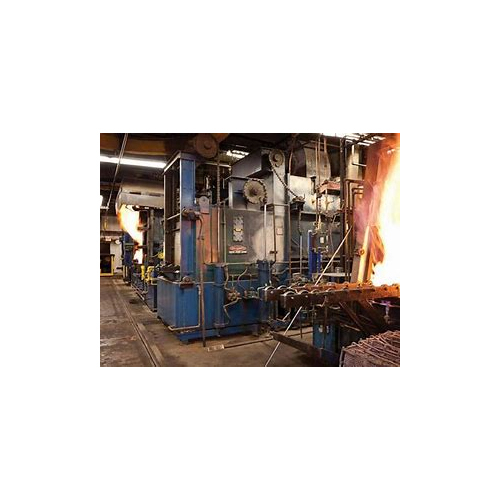Trade Information
- Minimum Order Quantity
- 1 Unit
- डिलीवरी का समय
- दिन
About
Carburising is one of the most commonly performed steel heat treatments. Carburizing, also known as Case Hardening, is a heat treatment process that improves the surface properties of steel components. By diffusing carbon into the surface, carburizing creates a hardened case while maintaining the toughness and strength of the core. This article explores the benefits, process, and applications of carburizing in various industries.
Understanding Carburizing
Carburizing is a heat treatment technique used primarily on low carbon steel parts after machining. It is also applied to high alloy steel bearings, gears, and other components. The process involves increasing the strength and wear resistance of the steel by introducing carbon into its surface.
The process of carburizing involves heating iron or steel to a high temperature, causing a change in the grain structure of the metal. This change allows the steel to absorb carbon, resulting in the formation of a wear-resistant layer. Carburizing is widely used in the production of strong and safe metals.
During carburizing, the metal is heated in the presence of a carbon-bearing material like charcoal or carbon monoxide. The goal is to increase the hardness of the metal. The carbon content in the affected area can vary depending on the duration and temperature of the process. Generally, longer carburizing times and higher temperatures lead to greater carbon diffusion and deeper carbon penetration.
After the carburizing process, the iron or steel is rapidly cooled through quenching. This causes the outer surface, which has a higher carbon content, to become hard as it transforms from austenite to martensite. Meanwhile, the core of the metal remains soft and tough, maintaining a ferritic and/or pearlite microstructure.
Benefits of Carburizing
Carburizing offers several advantages, including:
- Enhanced wear resistance: The hardened case formed during carburizing provides excellent resistance against wear, extending the lifespan of the component.
- Retained toughness: Despite the hardened surface, the core retains its toughness and strength, ensuring the component can withstand heavy loads and impact.
- Cost-effective: Carburizing allows the use of lower-cost materials that can be easily machined or formed before heat treatment, making it an economical choice for producing complex-shaped parts.
The surface became very hard, while the interior or "core" of the part retained the toughness of low carbon steel. The engineering of surfaces of components to improve the life and performance of parts used in automobiles and aerospace engineering is an active area of research. Thermomechanical surface engineering treatments will produce extensive rearrangements of atoms in metals and alloys and a corresponding marked variation in physical, chemical and mechanical properties. Among the more important of these treatments are heat treatment processes such immersion hardening, induction hardening and case carburizing.
Automobile components such as rack and pinion, gears, cam shaft valve rocker shafts and axles, which require high fatigue resistance, are normally case hardened by carburizing. The carburizing furnaces are either gas fired or electrically heated. The carburizing temperature varies from 870 to 940 oC the gas atmosphere for carburizing is produced from liquid or gaseous hydrocarbons such as propane, butane or methane. The study of process parameters in metals during heat treatment has been of considerable interest for some years, but there has been relatively little work on process variables during the surface hardening process since controlling parameters in carburization is a complex problem. The major influencing parameters in carburization are the holding time, carburizing temperature, carbon potential and the quench time in oil. The present work is focused on the effects of carburizing temperature and holding time on the mechanical properties of carburized mild steel.


Price: Â
- 50
- 100
- 200
- 250
- 500
- 1000+



